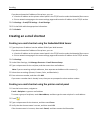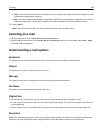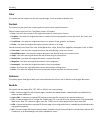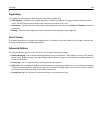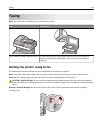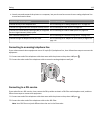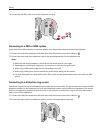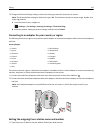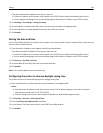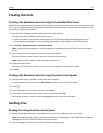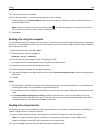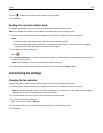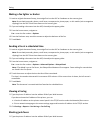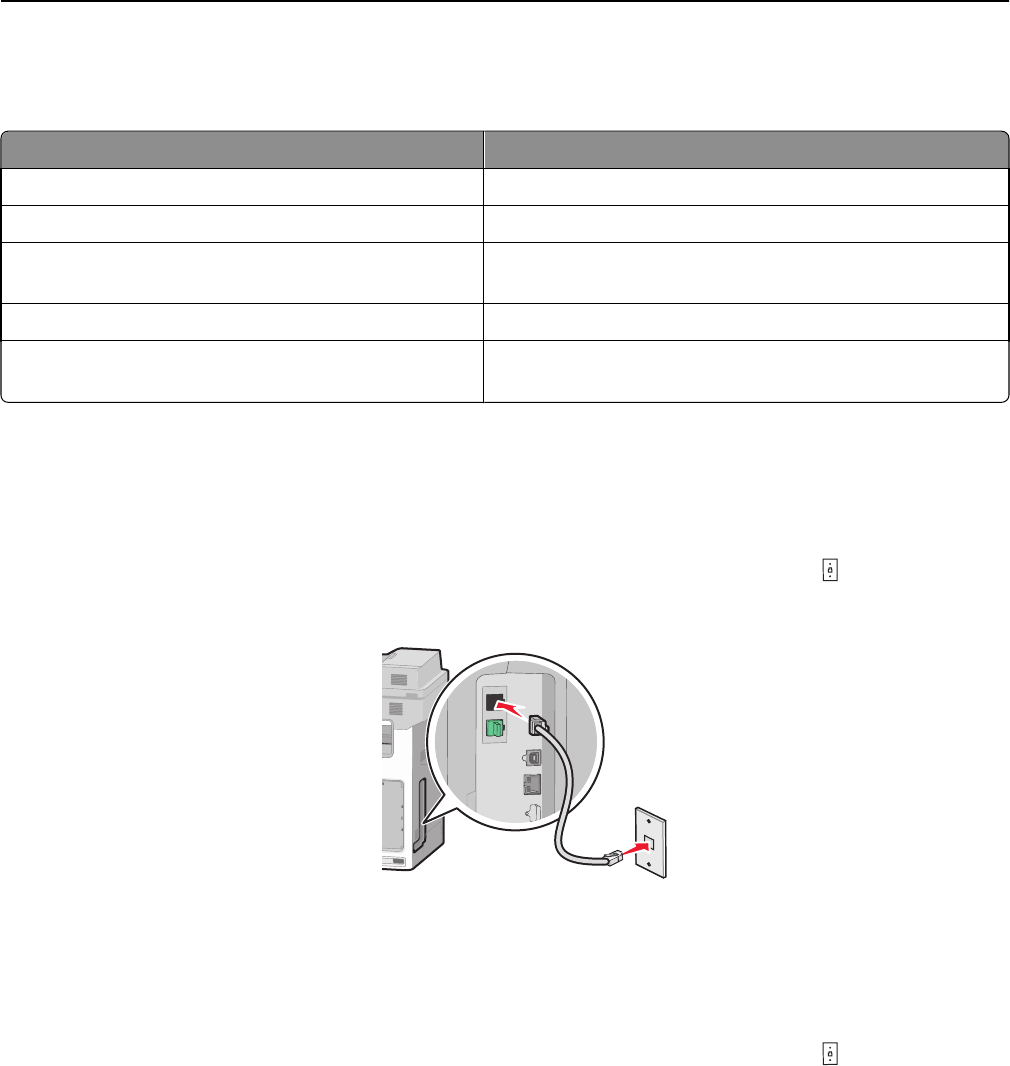
• You do not need to attach the printer to a computer, but you do need to connect it to an analog telephone line
to send and receive faxes.
Equipment and service options Fax connection setup
Connect directly to the telephone line. See “Connecting to an analog telephone line” on page 113.
Connect to a Digital Subscriber Line (DSL or ADSL) service. See “Connecting to a DSL service” on page 113.
Connect to a Private Branch eXchange (PBX) or Integrated
Services Digital Network (ISDN) system.
See “Connecting to a PBX or ISDN system” on page 114.
Use a Distinctive Ring service. See “Connecting to a distinctive ring service” on page 114.
Connect through an adapter used in your area. See “Connecting to an adapter for your country or region” on
page 115.
Connecting to an analog telephone line
If your telecommunications equipment uses a US‑style (RJ11) telephone line, then follow these steps to connect the
equipment:
1 Connect one end of the telephone cable that came with the printer to the printer LINE port .
2 Connect the other end of the telephone cable to an active analog telephone wall jack.
Connecting to a DSL service
If you subscribe to a DSL service, then contact the DSL provider to obtain a DSL filter and telephone cord, and then
follow these steps to connect the equipment:
1 Connect one end of the telephone cable that came with the printer to the printer LINE port .
2 Connect the other end of the telephone cable to the DSL filter.
Note: Your DSL filter may look different than the one in the illustration.
Faxing 113



